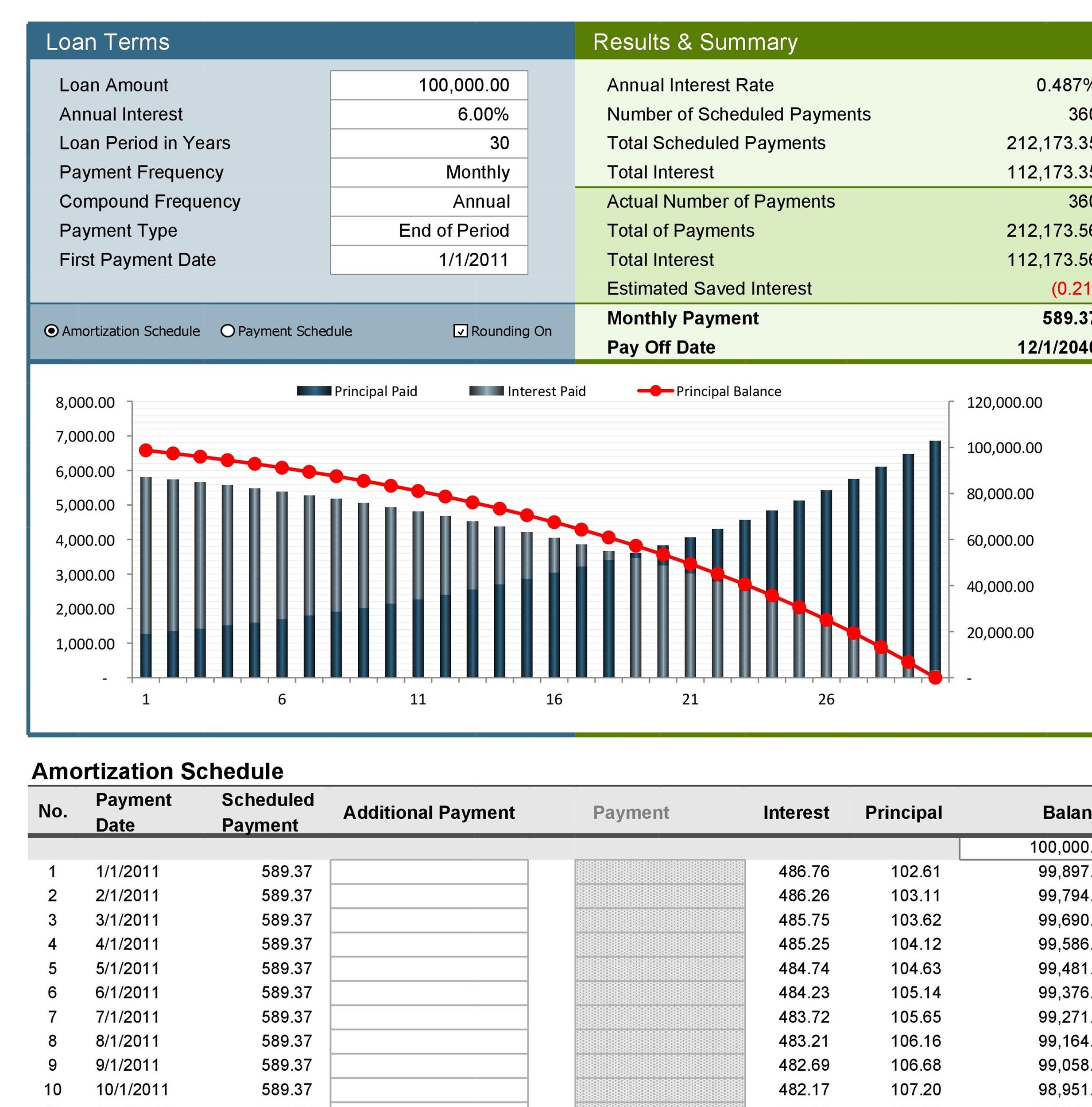
It details the principal paid, the interest paid, and the amount left after each payment. When you copy the formula down, it will change to ROW(A2) which will return a 2, and so on.To keep track of how much you owe on a loan or mortgage over time, you may use a table called an amortization schedule. Instead of putting the formulas in the worksheet, use ROW(A1) where the 1 needs to go. You should see that the balance reaches zero with the last payment.Īlternate Strategy: Anytime that you have to enter the numbers 1 to nn for a formula, there is a cool alternative.

Edit the formula and change PPMT to IPMT. Copy this formula to the Interest Payment column.Press F4 and type the closing parenthesis. Type a minus sign and click on the price in B1. Press the F4 key three times so that a dollar sign appears before the column number. The rate is B3/12, but after clicking on B3, press the F4 key to add the dollar signs. The only difference from the PMT function is the addition of the period number as the second argument. The syntax is =PPMT(rate, per, nper, pv,, ). Enter the PPMT function, using the proper absolute references, so that you can copy the function to column D to be used for IPMT.When you release the mouse button, choose Fill Months. Right-click+drag the fill handle to the last row. Enter the first payment date for the Date.Ctrl+drag the fill handle to fill in the proper number of payments. In the next row of the table, enter the number 1 for Payment.Ensure that the formula for Balance in the first row points to the price in B1.In a blank section of the worksheet, add the column headings Payment, Date, Principal, Interest, and Balance.Strategy: You can use PPMT and IPMT to build this amortization table. I would like to see my loan balance after each month's payment. Problem: I know it is easy to figure out a monthly payment using PMT.


 0 kommentar(er)
0 kommentar(er)
